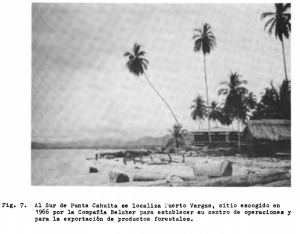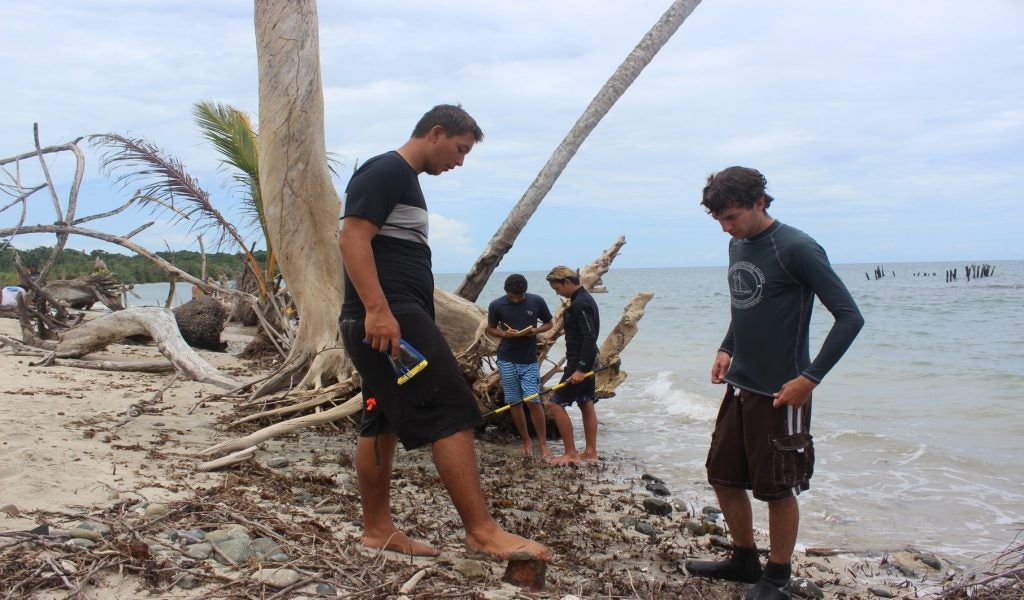
One of the major sites surveyed as part of the NAS part one and two training was the remains of a pier at Puerto Vargas. Literally translating to Port Vargas, the area is known anecdotally among the locals as a former lumber camp from the mid-20th century.
Secondary sources reference a sizeable lumber industry throughout this stretch of the Talamanca coast, geared towards the exportation of cedar logs to Limón (Palmer 1993). With the remains of semi-modern industrial activity apparent both on the beach and surrounding the pier, the location was formally surveyed in several capacities. Beginning on the shoreline, a team of Costa Rican students guided by their ECU counterparts conducted a walking survey of the Puerto Vargas shoreline. The shoreline survey area stretched along the beach from the remains of the old pier (northern bound) to the concrete pylons (southern bound). Artifacts discovered along this transect were marked with GPS points, photographed, and recorded with written descriptions. The beach was heavily populated with artifacts appearing to be from the mid-20th century, with many of them identified as autom
otive parts. Apart from these, other artifact finds included: bottle glass, window glass, brass fittings, ceramics, iron stakes, and other miscellaneous/unidentified iron objects.

The remains of the pier and the concrete structures at Puerto Vargas provided NAS participants the opportunity to gain more experience conducting site surveys, documenting artifacts, and recording data using a variety of archaeological tools. Additionally, the Puerto Vargas sites prompted the ECU and Costa Rican teams to research the lumber mill industry which operated in the region during the mid-20th century. The data collected by the ECU team and Costa Rican NAS participants will contribute to future knowledge of the region’s rich maritime history.